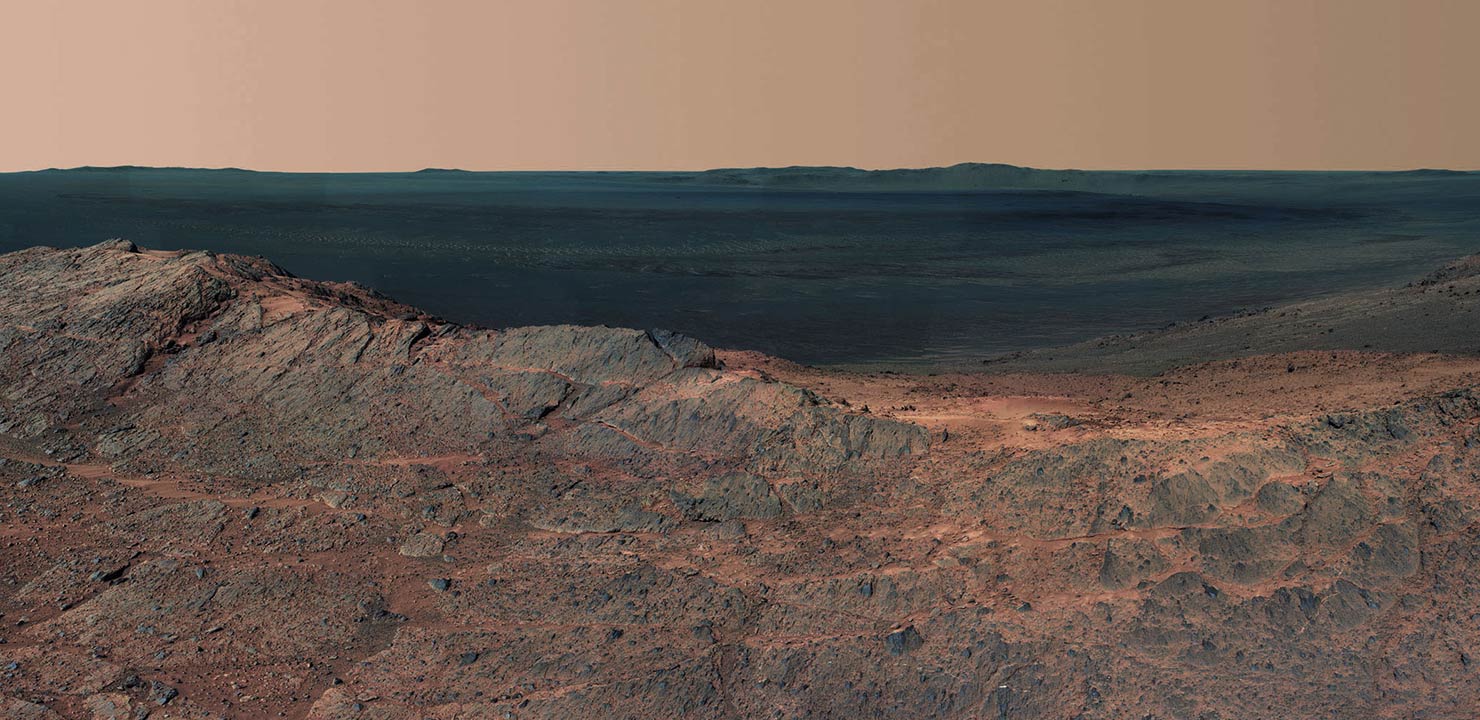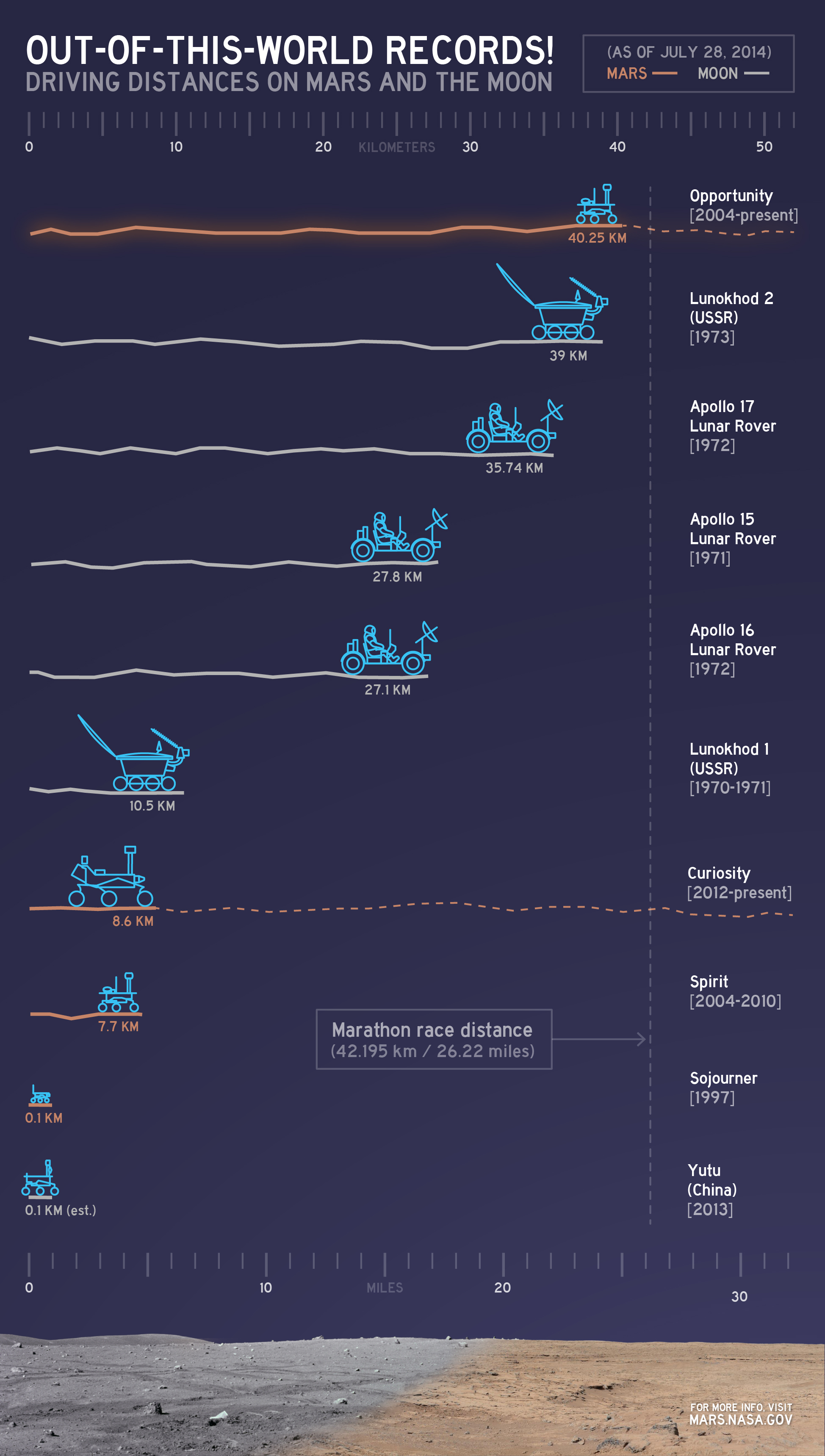
A Farewell to Mars Rover Opportunity
March 2019 :
By now, we are all aware of the sad ending of one of the best workhorse space craft NASA ever had: Opportunity. With its sister craft, Spirit, the two were meant to travel around our neighbor planet Mars for a few months, determining whatever it could about the possibility of water early in the planet’s history. Both were wildly successful in this quest.
Spirit lasted over six years, eventually falling victim to a dust storm that blocked its solar panels from continuing to supply power to the little machine; Opportunity, though, outlived Spirit by several years, traveling around Mars for tens of miles before it, too, after about 15 years, was not able to respond when called.
What may not be known by many in this region is the local connections to these amazing craft. Professor Dave Cutts reminded us of one of his former Brown Ph.D. students, John Callas, who became Project Manager for both Spirit and Opportunity missions. He came back to Brown several times to talk about the two rovers.
Also, one of Rhode Island’s own companies, EaglePicher, develops batteries for both space craft and military jets. The company, in addition to Spirit and Opportunity, also has its batteries on such missions as OSIRIS-REx and Insight, and are working on providing batteries for the next Mars rover mission, right now set for 2020. EaglePicher was recently featured in Providence Business News, a great way to introduce non-scientists to the amazing work being done with respect to the company’s work in powering our country’s space exploration.

This scene from the panoramic camera (Pancam) of NASA's Mars Exploration Rover Opportunity catches "Pillinger Point," on the western rim of Endeavour Crater, in the foreground. The eastern rim of the crater is on the distant horizon. Endeavour Crater is 14 miles (22 kilometers) in diameter.
The vista spans from north-northwest, at the left, to south-southwest, at the right. It merges several Pancam exposures taken on the 3,663rd Martian day, or sol, of Opportunity's work on Mars (May 14, 2014). The scene is presented in approximate true color by combing exposures taken through three of the Pancam's color filters, centered on wavelengths of 753 nanometers (near-infrared), 535 nanometers (green) and 432 nanometers (violet).
Opportunity's international science team chose Pillinger Point as the informal name for this ridge as a tribute to Colin Pillinger (1943-2014). Pillinger was the British principal investigator for the Beagle 2 project, which attempted to set a lander on Mars a few weeks before Opportunity's January 2004 landing.
The site became a destination for Opportunity to examine because observations from orbit indicated the presence of a clay mineral named montmorillonite, which forms under wet conditions.
Image Credit: NASA/JPL-Caltech/Cornell Univ./Arizona State Univ.



